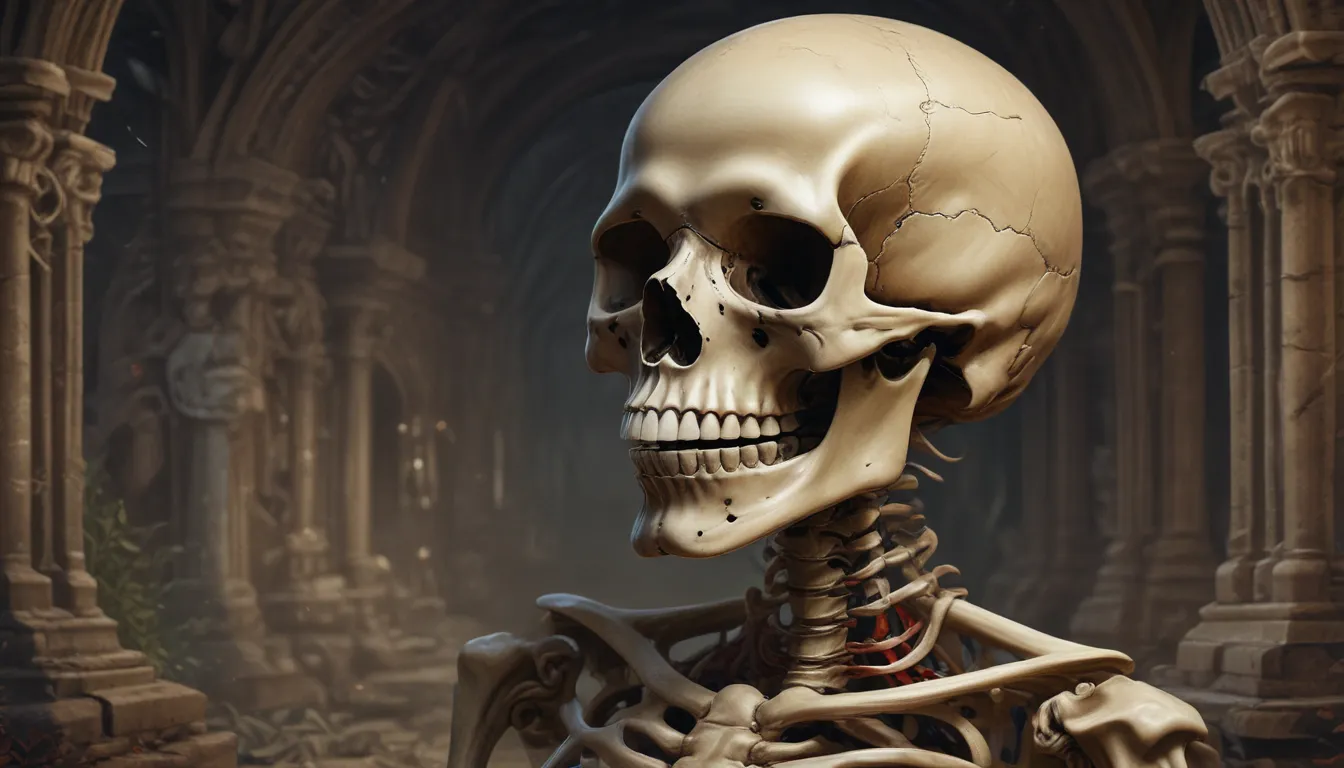A Note About Images: The images used in our articles are for illustration purposes only and may not exactly match the content. They are meant to engage readers, but the text should be relied upon for accurate information.
Are you intrigued by the mystery of skeletons and their vital role in the biology of living organisms? Skeletons are not just Halloween decorations; they are complex structures that provide support, protection, and movement to various creatures. In this comprehensive guide, we will delve into 20 captivating facts about skeletons that will amaze and educate you. Whether you’re a science enthusiast or simply curious about the wonders of the skeletal system, these facts will illuminate the intricacies of bones and their significance in shaping life on Earth.
Exploring the World of Skeletons
Skeletons, the internal frameworks of living beings, serve as the foundation that supports and shapes the body. From humans to insects, various organisms possess unique skeletal structures that contribute to their survival and mobility.
- Human skeletons consist of 206 bones in adulthood, with some bones fusing together as we grow.
- Bone marrow, housed within bones, plays a crucial role in producing blood cells.
A Variety of Skeletal Types in Nature
Nature showcases a diverse range of skeletal structures, each tailored to the unique needs of different organisms.
- Exoskeletons, found in insects and crustaceans, provide external support and protection but must be shed for growth.
- Endoskeletons, present in vertebrates like humans, grow internally with the organism, offering continuous support.
- Hydrostatic skeletons, observed in soft-bodied animals like worms, utilize fluid pressure for shape and movement.
The Growth Process of Skeletons
Understanding how skeletons develop sheds light on their functionality and importance in the animal kingdom.
- Ossification is the process through which bones form and harden from cartilage, ensuring the creation of a durable skeleton.
- Growth plates located at the ends of long bones drive bone growth in humans, gradually ossifying until the cessation of growth in early adulthood.
The Vital Connection Between Skeletons and Health
Healthy bones are essential for overall well-being, and maintaining bone health requires a combination of proper nutrition and exercise.
- Calcium and vitamin D are crucial for bone strength, and deficiencies can lead to conditions like osteoporosis.
- Regular physical activity stimulates bone formation and helps prevent bone loss, promoting strong and healthy skeletal systems.
- Arthritis, a common condition affecting joints, can cause pain and reduce mobility if left untreated.
Unveiling Fascinating Skeleton Facts
Skeletons harbor a multitude of intriguing secrets and extraordinary details that often go unnoticed.
- The stapes bone in the human ear is the smallest bone in the body, measuring as little as 2.5 mm.
- Both giraffes and humans have seven neck vertebrae, despite the significant difference in neck length.
- Sharks possess skeletons made of cartilage, a lighter and more flexible alternative to bone.
- The human skull consists of 22 fused bones, except for the separate mandible.
- Bird skeletons are optimized for flight, with many hollow bones that reduce weight without compromising strength.
Skeletons in Culture and Mythology
Throughout history, skeletons have been prominent symbols in various cultures and mythologies, representing themes of life and death.
- In many cultures, skeletons are linked to death and the afterlife, often featured in festivals like Mexico’s Day of the Dead.
- Pirates utilized the skull and crossbones symbol, known as the Jolly Roger, to instill fear in their adversaries.
- Skeletons have been portrayed as protectors and guardians in mythology, safeguarding sacred places and treasures.
- The Grim Reaper, a skeletal figure clad in black, symbolizes death in Western cultures.
- Ossuaries, structures dedicated to storing human bones, serve as reminders of mortality and the cyclical nature of life.
Unveiling the Enigmatic World of Skeletons
Embark on a journey through the enigmatic world of skeletons, uncovering a plethora of knowledge that transcends mere biology.
From the intricate details of human bone development to the surprising similarities between giraffes and humans, the realm of skeletons is a testament to the resilience and adaptability of life on our planet. Armed with these newfound insights, we can marvel at the complex beauty hidden within the skeletal systems that sustain us all.
Trustworthy and Engaging Content
Our commitment to delivering accurate and engaging content is paramount. Each fact presented on our platform is contributed by real users, ensuring a diverse range of insights and information. Our dedicated editors meticulously review each submission to uphold the highest standards of accuracy and authenticity. Trust in our dedication to quality as you explore the fascinating world of skeletons with us.






